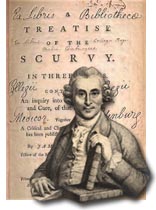James Lind Alliance

The James Lind Alliance is a British non-profit making initiative, established in 2004.[1] It was established to bring patients, carers and clinicians together, in Priority Setting Partnerships, to identify and prioritise the unanswered questions about treatments that they agree are most important. The intention is to ensure that those who fund health research are aware of what matters to patients, carers and clinicians.
From 1 April 2013, the secretariat of the James Lind Alliance has been hosted by the National Institute for Health Research Evaluation, Trials and Studies Coordinating Centre (NETSCC). Its work includes recruiting and training JLA Advisers, coordinating Priority Setting Partnerships, communications and liaising with other parts of the National Institute for Health Research (NIHR). In 2016 the James Lind Alliance was granted with the Societal Award of the Foundation Federation of Dutch Medical Scientific Societies (Federa) for their initiative to bring patients into partnerships for research priorities [2]
Background
Research on the effects of treatments often overlooks the shared interests of patients and clinicians. As a result, questions they both consider important are not addressed. The pharmaceutical and medical technology industries and academia play essential roles in developing new treatments, but their priorities are not necessarily the same as those of patients and clinicians. For this reason many areas of potentially valuable research are neglected. Bringing patients and clinicians together to prioritise questions in treatment uncertainty is thought to be rare.[3]
Method of operation
The James Lind Alliance brings together patients and patient representatives, carers and clinicians, as individuals or represented by groups, to form Priority Setting Partnerships, focusing on specific health conditions. For example, the Asthma Priority Setting Partnership was led by Asthma UK and the British Thoracic Society, while the Urinary Incontinence Priority Setting Partnership was led by the Bladder & Bowel Foundation [1] and the Cochrane Incontinence Group [2], part of the Cochrane Collaboration.[4]
Priority Setting Partnerships work together to gather uncertainties about the effects of treatment, to be entered into the Database of Uncertainties about the Effects of Treatment (DUETs) [3], part of the National Health Service (NHS) National Library for Health [4]. The uncertainties are all checked to ensure they cannot be answered by existing knowledge, research or sources of information.
The uncertainties then go through a process of prioritisation, which aims to culminate in a top ten list of priorities for research, shared by patients, carers and clinicians. To date, the process has been completed for over 30 health areas including Asthma, Urinary Incontinence, Anaesthetics and Perioperative Care, Vitiligo, Intensive Care, Prostate Cancer, and Surgery for Common Shoulder Problems.
One of the James Lind Alliance’s strategic aims is to develop a body of research supporting the concept of patient involvement in research priority-setting, and the group is involved in commissioning a range of research. It has been argued that patient and carer involvement in research should be standard practice, with academic status taking second place to patient interests [5].
James Lind
The Alliance is named after a pioneer of clinical trials, James Lind (1716–1794). Two hundred and fifty years ago, there were many conflicting ideas and unanswered questions about how to treat the deadly disease scurvy. Lind, a Scottish naval surgeon, decided to confront this uncertainty by treating his patients within a clinical trial comparing six of the proposed remedies. His trial showed that oranges and lemons were dramatically better than the other supposed treatments.[5]
References
- ^ The Lancet, Volume 364, Issue 9449, Pages 1923 - 1924, 27 November 2004
- ^ https://federa.org/Participation%20by%20patients%20in%20science
- ^ British Medical Journal 2008;336:903-904 (26 April), doi:10.1136/bmj.39547.586100.80
- ^ Nursing Times (2008); 104: 18, 38–39
- ^ James Lind Library, biography of James Lind
External links
- James Lind Alliance http://www.jla.nihr.ac.uk
- James Lind Library http://www.jameslindlibrary.org
